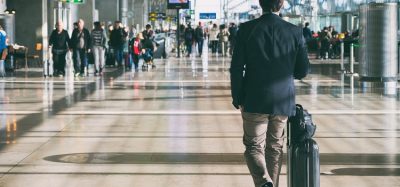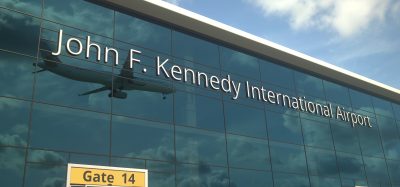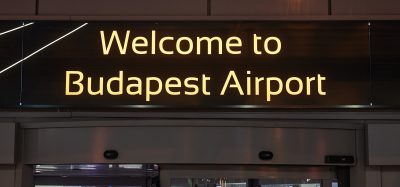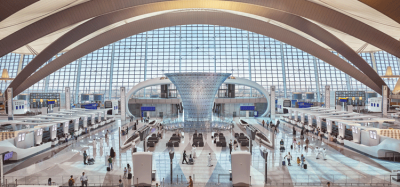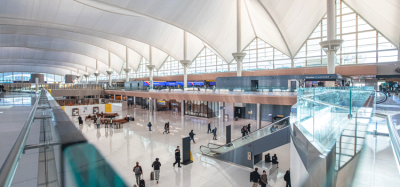Aviation’s Post-Crisis Recovery Series: Fort McMurray International Airport
- Like
- Digg
- Del
- Tumblr
- VKontakte
- Buffer
- Love This
- Odnoklassniki
- Meneame
- Blogger
- Amazon
- Yahoo Mail
- Gmail
- AOL
- Newsvine
- HackerNews
- Evernote
- MySpace
- Mail.ru
- Viadeo
- Line
- Comments
- Yummly
- SMS
- Viber
- Telegram
- Subscribe
- Skype
- Facebook Messenger
- Kakao
- LiveJournal
- Yammer
- Edgar
- Fintel
- Mix
- Instapaper
- Copy Link
Posted: 29 January 2021 | Roelof-Jan (RJ) Steenstra | No comments yet
For the first instalment of International Airport Review’s new and exclusive online series, the President and CEO of the Fort McMurray Airport Authority (FMAA), Roelof-Jan (RJ) Steenstra, discusses how the airport has responded to the COVID-19 pandemic and how his outlook for the future remains positive, but is intersected with a healthy dose of reality.
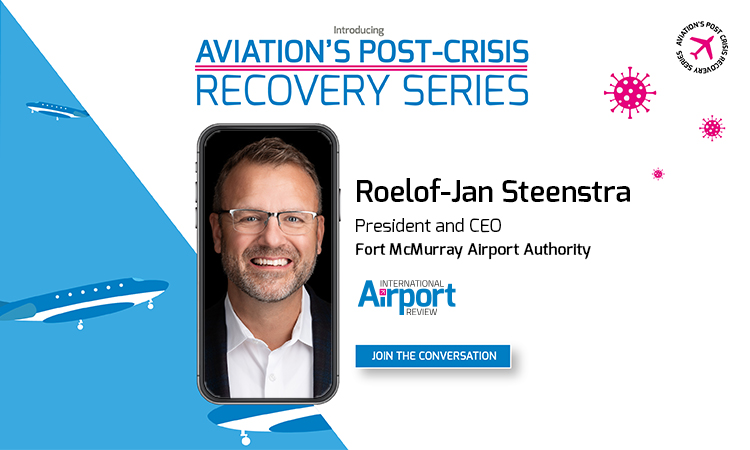

The COVID-19 pandemic has been completely unprecedented in its impact on the aviation industry. How has it impacted Fort McMurray International Airport?
At Fort McMurray International Airport (YMM), our traffic initially dropped by over 90 per cent, then we ended the year down by 65 per cent. The saying “where traffic flows, revenue goes,” translated into a 50 per cent loss for us in 2020. Traffic gradually started to return over the summer and into the autumn of 2020, which was largely to do with our diverse market segments, including essential workforce movements for the oil industry. In fact, while we were down significantly on a percentage basis, YMM outperformed all other major Canadian airports. You can say that we were the best of the worst.
While we were down significantly on a percentage basis, YMM outperformed all other major Canadian airports”
Despite the negative impacts, we experienced several positive effects. My team’s collective response to the pandemic brought us closer together. For me, it validated the importance of investing in the health of our organisation’s culture. Moments of crisis shine a light on how well teams are prepared to come together, adapt quickly and solve problems. I believe that our culture is stronger than ever because we tackled the pandemic focused and united.
What immediate changes did you have to make in response to the pandemic, and what did you find the hardest problem to tackle?
We modelled the new environment using various financial recovery scenarios to stabilise the organisation where we could”
Our immediate action was to introduce response mitigation measures to protect the health and safety of all airport users. We initiated our Incident Command System to get ourselves organised, set objectives and reduce the risk of transmission. At the same time, we modelled the new environment using various financial recovery scenarios to stabilise the organisation where we could. My team’s focus and agility continue to this today.
The hardest problem we faced was taking deliberate action while working in tremendous uncertainty. The impacts were huge with an unclear end, if any, in sight. It was like going down a raging river for the first time with no understanding of the speed of the water, the length and depth of the river or the obstacles that were in our way. A certain level of exhilaration and fear existed, similar to the Horse River Wildfire in 2016, which evacuated the entire city of Fort McMurray for over 30 days. That was the largest natural disaster in Canadian history, and so leveraged our training, good judgement and decision-making abilities.
What initiatives are you focusing on during 2021 to rebuild passenger confidence?
At the end of 2020, we took the time to revalidate our new vision and strategic goals that we rolled out in January 2020. Our path for 2021 is very much focused on achieving global re-certification as part of Airports Council International (ACI) World’s Airport Health Accreditation (AHA) programme. Passengers can only feel confident flying if we are not just meeting, but instead exceeding, what is expected of us.
Passengers can only feel confident flying if we are not just meeting, but instead exceeding, what is expected of us”
Our community also needs to feel confident in YMM’s ability to remain viable and sustainable for the long-term. Economic recovery is not possible without a healthy and sustainable airport. The rubber will hit the road during 2021 on executing on our long-term debt strategy and, of course, our work with the Canadian Airports Council (CAC) advocating for financial relief options and rapid testing for the aviation industry.
We cannot do any of these things without the best people. We are a lean team that needs to continue doing more with less. During 2021, we doubled down on our budget for training and professional development to help increase value to a changing organisation.
What other exciting projects/developments are in the pipeline at Fort McMurray Airport to help cope with increased passenger numbers once air travel begins to pick-up again?
Our health and safety team are constantly doing proactive assessments of the terminal and reviewing current mitigations to see if we need to make further enhancements”
We have a growing partnership with Fort McMurray Wood Buffalo Economic Development & Tourism (FMEBEDT), so there is a real possibility to affect the use of the airport and passenger experience. It is an exciting time, as they have just launched a new place brand for the region that awakens everyone to all that the region has to offer. From a visitation and business investment perspective, it gives us the opportunity to honour our foundational oil industry, but also moves the region in a different direction economically. When recovery does take hold from this pandemic, our foundational and collaborative work with partners like FMWBEDT will be critical to our success, and vice versa.
Our enhanced health and safety programme, YMM Committed, is also designed in such a way that we can increase our health and safety mitigations even further, should we anticipate seeing more traffic. Our health and safety team are constantly doing proactive assessments of the terminal and reviewing current mitigations to see if we need to make further enhancements.
Are there any initiatives that you have implemented during the COVID-19 pandemic that you will permanently integrate into your airport’s strategy, even once the crisis has passed?
One of the key lessons coming from the pandemic is knowing that working from home can be productive and effective, yet still contributes to a positive corporate culture”
I think one of the key lessons coming from the pandemic is knowing that working from home can be productive and effective, yet still contributes to a positive corporate culture. We have seen the benefits that this flexibility offers to our people. It improves their wellbeing when they are not faced with the burden of finding childcare or elderly care and other pandemic-related family challenges.
As well, it promoted a focus on results and effectiveness, not just putting time in at a desk. We were also able to flex our muscles within our Incident Response Framework in real time, with real learning that can be taken forward into future situations. Not to mention embedding the systems needed to respond to an incident virtually. We now exercise our training and can respond to an incident virtually.
What business activity are you forecasting for Fort McMurray Airport/ what is your business outlook?
We cannot predict when the industry will be back on track for growth, or what it will look like as deep changes remain in the works”
Our outlook remains positive, intersected with a healthy dose of reality. We cannot predict when the industry will be back on track for growth, or what it will look like as deep changes remain in the works. Sure, we will have airplanes, airports, regulators and travellers, but it will be more how about how these relationships will intersect and at what level. I do think that we are at an inflection point that will require us to look deeply into how the industry and, in particular, my airport will operate.
We will need to: Continue to develop collaborative relationships with our stakeholders and partners; adopt technology to move people safely and effectively; and reframe what growth is and what it means for our communities, regions and countries. We will also need to closely examine our relationships with government to ensure that we are getting the maximum from the dynamic currently at play. Policies need to be forward thinking, yet helpful in the current reality. It is with this lens that I can ensure that YMM is best positioned to not only be sustainable, but also contribute to economic wellbeing and, by extension, quality of life for the residents and communities that we serve.
Roelof-Jan (RJ) Steenstra, President and Chief Executive Officer for the Fort McMurray Airport Authority (FMAA), has been transforming businesses into sustainable, resilient and vibrant enterprises for more than 18 years. Steenstra has contributed to the transportation, technology and financial industries in various executive roles throughout his career. Steenstra holds a BSc. in Anthropology and BA in Communications from the University of Calgary, a Diploma in Management Consulting from Grenoble Graduate School of Business and an MBA from Royal Roads University.
Related topics
Airport crisis management, Aviation's Post-Crisis Recovery Series, COVID-19, Passenger experience and seamless travel, Passenger volumes, Safety, Workforce
Related airports
Related organisations
Airports Council International (ACI World), Canadian Airports Council (CAC), Fort McMurray Airport Authority (FMAA), Fort McMurray Wood Buffalo Economic Development & Tourism (FMEBEDT)



